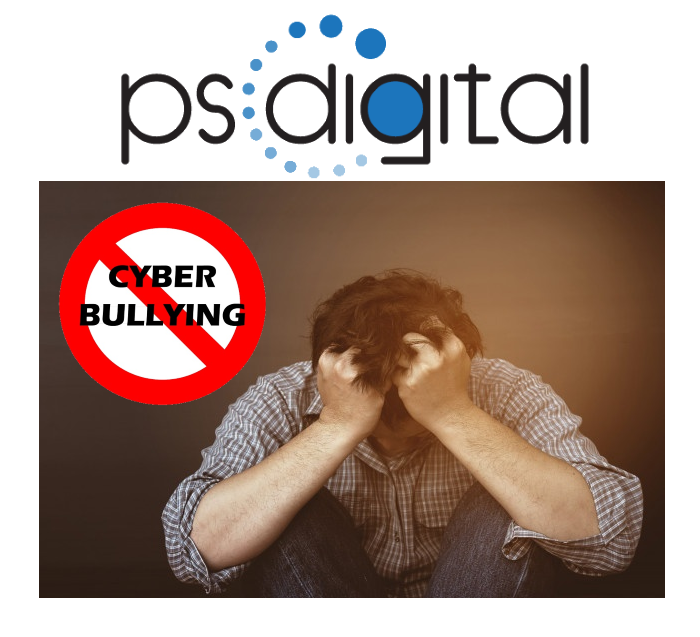Cyber-bullying or Online Harassment, what is it and what do you do when it happens. It might sound like something from a movie but I assure you it is very real. In a world where all of us spend more and more time online, it is more than likely that everyone has been a victim of cyber-bullying.
Using Social media for marketing doesn’t make one immune to these types of activities, in actual fact it makes it worse. In this article we will identify the different types of cyber harassment.
Every social platform is constantly checking and investigating user safety but at the rate social platforms are growing and usage rate is rising, it is almost impossible to block it all.
- Cyber Stalking (Crime)
Wikipedia describes this form of cyber-bullying as the use of the Internet or other electronic means to stalk or harass an individual, group, or organization. It may include false accusations, defamation, slander and libel. It may also include monitoring, identity theft, threats, vandalism, solicitation for sex, or gathering information that may be used to threaten, embarrass or harass.
Some people say they stalk someone on social platforms but it is important not to devalue or mix this up with very real and dangerous cyber-stalking by using the term incorrectly.
What to do:
Block that person on all social platforms and be careful when making new friends online.
Collect evidence of your attempt to stop them. - Online impersonation (Crime)
Online impersonation or e-personation is when someone uses the name or business name of someone else to send email, post material, create social networking accounts, or uses apps, messaging sites to contact other people in any way. Using someone’s name or business name is a powerful tool to damage the reputations, harass, defraud, threaten, intimidate others.
What to do:
Maintain adequate identity theft protection.
Report false profiles
Contact a lawyer to build a case. - Catfishing (Non-criminal)
Using false names, profiles, contact information and locations, this type of online harassment is not illegal but still poses a threat. These people will often times come in the guise of a friend of a friend, or as a potential love interest.
What to do:
If you suspect someone of catfishing, do a reverse google image search of the user’s profile picture.
If they are fake it will lead you to multiple profiles or to a website that the catfhiser pulled the image from.
Check how many friends they have on the various social platforms. On average most people have 130 friends, catfishers have a lot less.
Check if the photos they have look like normal activity, such as photos with friends or family. Most catfishers will have selfies or modelling shots. Also see if they have tagged photos, it shows they are actually friends with the people they have in the photos.
Report these suspected catfishers.
Ask them to Skype with you via webcam, if they won’t, it is a red flag. - Doxing (Crime if the information is not public)
When someone’s personal information is posted online as a call for others to harass them.
Harassers will often take to this method of cyber-bullying when they take offense to something they
don’t like about a business, person or product. Lifewire described Doxing like this: “Doxing can also be seen as a way to right perceived wrongs, bring someone to justice in the public eye, or reveal an agenda that had previously not been publicly disclosed.
The main purpose for this type of harassment is violation of privacy. They want others to see your personal information
and also harass you or your business.” “Revealing someone else’s information online without their knowledge or consent can be incredibly intrusive. It also can cause real damage: damage to both personal and professional reputations, potential financial implications, and social backlash.”
What to do:
Keep your data private. Set all the privacy settings to the maximum on all social
platforms. If you do not need to add your number or address to a profile, rather not
put it in.
Get a VPN to protect your location. - Swatting (Crime)
Wikipedia describes this type of online harassment: “Swatting is the harassment tactic of deceiving an emergency service into sending a police and emergency service response team to another person’s address. This is triggered by false reporting of a serious law enforcement emergency, such as a bomb threat, murder, hostage situation, or other alleged incident”
The main goal of this type of harassment is to scare, intimidate, humiliate and terrorize the victims.
What to do:
Purchase a VPN to protect your location
Take legal action - Trolling (Non-Criminal)
Wikipedia explains: “In Internet slang, a troll is a person who starts quarrels or upsets people on the Internet to distract and sow discord by posting inflammatory and digressive, extraneous, or off-topic messages in an online community (such as a newsgroup, forum, chat room, or blog) with the intent of provoking readers into displaying emotional responses and normalizing tangential discussion, whether for the troll’s amusement or a specific gain.
In other words, it is someone who makes unsolicited comments that are random, controversial to evoke emotion others.
What to do:
Don’t respond to such comments or images
Report the person
Block them from the group or personal accounts
Please be safe and rather follow the safety guidelines. It can take time or be a little restricting but it is worth the effort.


Recent Comments